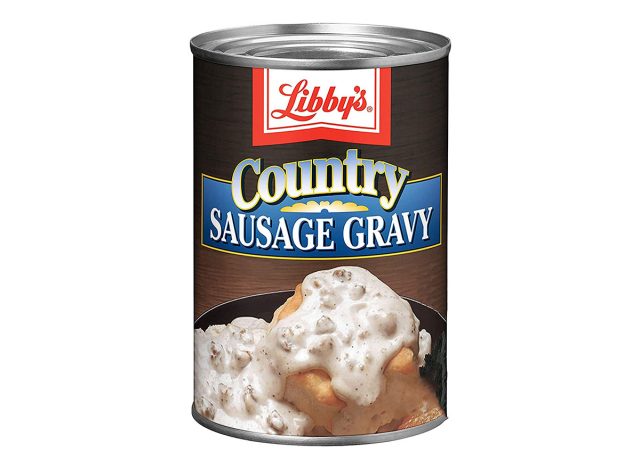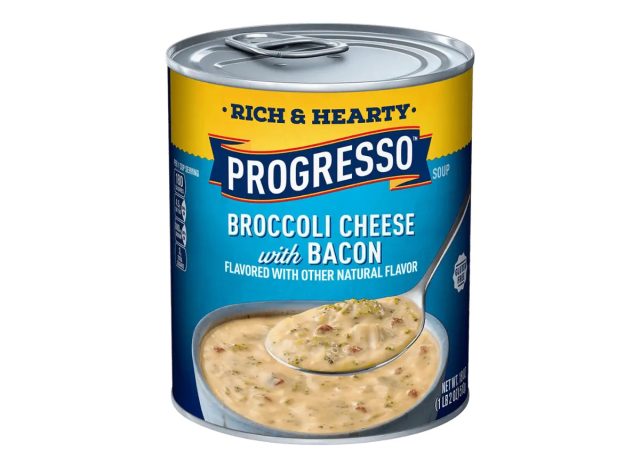Beef stew is a classic comfort food that has been enjoyed for generations With tender chunks of beef, carrots, potatoes and other veggies simmered in a rich, savory broth, it’s easy to see why this hearty dish is a crowd pleaser While homemade beef stew is delicious, the canned version offers convenience for busy home cooks. But is canned beef stew just as nutritious as homemade? Let’s take a closer look at the nutrition profile of this canned classic.
An Overview of Canned Beef Stew Nutrition
Canned beef stew is an excellent source of vitamin A and a good source of protein and iron. One cup provides around 230 calories 10g of protein and 3-5g of fiber. It also contains B vitamins like niacin vitamin B6 and pantothenic acid. The exact nutrition facts can vary slightly between brands, but most canned beef stews deliver a decent nutritional punch.
Compared to homemade beef stew, the canned version may be higher in sodium. Canned foods often contain added salt as a preservative. For example, a 1 cup serving of Campbell’s Chunky Classic Beef Stew has 790mg of sodium. The American Heart Association recommends limiting sodium to 1500mg per day, so this means that one cup of canned beef stew provides over half of the recommended daily limit. However, lower sodium options are available.
The Pros of Canned Beef Stew
While fresh, homemade beef stew is hard to beat, the canned version offers some distinct advantages:
Convenience – No chopping, sautéing, simmering required. Just open the can and heat. Canned beef stew makes an easy lunch or dinner when time is short.
Long shelf life – Unopened cans of beef stew can be stored for 1-2 years. It’s a handy item to keep on hand for emergency food supplies.
Cost effective – Canned beef stew is an affordable way to get several servings of meat and vegetables. Many brands retail for $2-3 per 15 oz can.
Rich in protein – With about 10g of protein per serving, canned beef stew provides a good protein boost. The protein comes from the beef as well as beans that are often included.
Contains veggies – In addition to potatoes and carrots, some canned beef stews include peas, corn, green beans and tomatoes. It’s an easy way to get servings of veggies.
Gluten-free – Most major brands of canned beef stew are gluten-free, which is good news for anyone avoiding gluten. Always check labels to be sure.
Satisfying – Warm, hearty, slightly sweet – canned beef stew satisfies comfort food cravings. It’s filling and tastes like home.
Potential Downsides of Canned Beef Stew
However, there are some potential drawbacks with canned beef stew:
-
High in sodium – To limit the amount of added sodium, choose low or reduced sodium options. Or rinse the canned stew to remove some excess salt.
-
Not as fresh – The veggies and meat are cooked and canned at the peak of freshness, but won’t be quite as vibrant as homemade.
-
May contain preservatives – Check the ingredients list for additives like MSG or sulfites if you wish to avoid them.
-
Less control over ingredients – You can’t customize ingredients to suit your tastes. Canned stew contains what the manufacturer includes.
-
Not as thick – The broth may be thinner compared to stew slowly simmered at home. If desired, thicken with a little flour.
-
Potential BPA exposure – Canned foods may be packaged in containers lined with BPA. Look for a “BPA-free” label.
Tips for Choosing a Healthy Canned Beef Stew
When shopping the canned stew aisle, keep these tips in mind to get the best nutrition:
-
Seek low sodium options with preferably less than 500mg per serving
-
Check the fat content and avoid those high in saturated fat
-
Look for stews packed in BPA-free cans when possible
-
Scan ingredients for preservatives like MSG if avoiding them
-
Select stews with plenty of veggies like carrots, potatoes, peas
-
Compare protein amounts and go for at least 8-10g per serving
-
Buy organic to avoid GMOs, hormones, and antibiotics when possible
-
Seek out gluten-free stews if required for your diet
Healthy Ways to Enjoy Canned Beef Stew
While canned beef stew is tasty straight from the can, there are lots of nutritious ways to prepare it:
-
For more nutrients, sauté extra veggies like onions, celery, mushrooms or kale and add to the stew.
-
Mix canned stew with rice, barley or quinoa for a complete protein and fiber boost.
-
Turn canned stew into a healthy shepherd’s pie by topping with cauliflower mash.
-
For a lower carb option, ladle the stew over spaghetti squash instead of pasta or potatoes.
-
For added richness, swirl in a spoonful of pesto or hummus before serving.
-
To make it a meal, serve stew with a side salad and whole grain rolls or biscuits.
-
For kids, use reduced sodium stew and serve with whole wheat dinner rolls for dunking.
-
For a lazy Sunday supper, pair canned stew with a simple green salad and glass of red wine.
Homemade from Scratch vs. Canned: Which is Healthier?
When it comes to canned beef stew vs. homemade, which one wins out nutritionally? The answer largely depends on the specific recipes compared.
A homemade beef stew made with fresh herbs, lots of vegetables, lean cuts of grass-fed beef and minimal sodium will be healthier than a canned version with more sodium and preservatives. However, a homemade stew made with fatty beef, butter, heavy cream and white potatoes may not be much better than canned.
For the best nutrition, make beef stew at home using healthy ingredients. But for convenience, keeping a few cans of reduced sodium organic beef stew on hand is a good backup plan. Choosing the lower sodium canned options and boosting nutrition by pairing with veggies and whole grains makes enjoying canned beef stew perfectly healthy.
The Verdict: Canned Beef Stew Can Fit Into a Nutritious Diet
While fresh, homemade beef stew has its merits, the canned version can be a healthier option when time is limited or the fridge is empty. Look for reduced sodium, organic stews packed with vegetables, protein and fiber. Enjoy canned beef stew paired with extra veggies, whole grains, salads, or in creative casseroles or soups. Consumed in moderation as part of an overall balanced diet, canned beef stew can be a wholesome and convenient meal option. This classic comfort food from the can is tasty and satisfying.

Libby’s Country Sausage Gravy

Remember the suggestion of choosing canned items with familiar ingredients? This canned gravy is a good example of why. Additives, preservatives, and other questionable ingredients can be found in this item, one of which is caramel coloring. This ingredient is often found in soda and candy, and lurks in processed savory items, too. Caramel color is sometimes produced with ammonia which can mean it may contain cancer-causing contaminants, according to the Center for Science in the Public Interest.
Progresso Soup Broccoli Cheese with Bacon

Another option packed with unfamiliar ingredients, this broccoli cheese soup with bacon makes this list for several reasons. Sugar, sodium nitrite, and sodium phosphate are a few of the questionable ingredients found in the “rich & hearty” line of soups. Youll also find nearly 900 milligrams of sodium per one-cup serving. Additionally, with only 1 gram of fiber and 6 grams of protein per serving, this makes a less balanced meal than many other soup options.
Review of my Canned Beef Stew One Year Later…Was it Good or Was it Spoiled?
FAQ
Is DINTY MOORE beef stew ok to eat?
Is it healthy to eat canned beef?
What kind of meat is in DINTY MOORE stew?
Is canning beef stew a good idea?
Canning beef stew is a great way to put up nutritious meals in a jar right on your pantry shelf. Canning Beef Stew Quick and easy weeknight meals are all about planning ahead. Sometimes that means meal planning and prep earlier in the week, but it can also mean canning meals in jars for a nutritious homemade meal within easy reach in the pantry.
Are canned beans healthy?
Some canned beans are usually added with salt or other seasonings. Make sure you choose the ones that has no added salt, sugar or any other seasoning to prevent over consumption of salt in your diet.
Does beef stew come canned?
Mmm, beef stew. It’s not exactly something you’d expect to come canned, but it sure does make for a convenient meal when you’re craving deeply comforting beefy flavors but don’t want to invest the time, effort, and energy getting a proper stew cooked at home. We feel you.
Can you eat canned beef stew if you have a cold?
Out of all the delicious comfort meals, we always turn to any beef stew recipe to combat the cold. It often requires hours of slow cooking, though. So, stocking up on jars of ready-to-eat canned beef stew is a great idea and a clever shortcut to a tasty, comforting dish.
